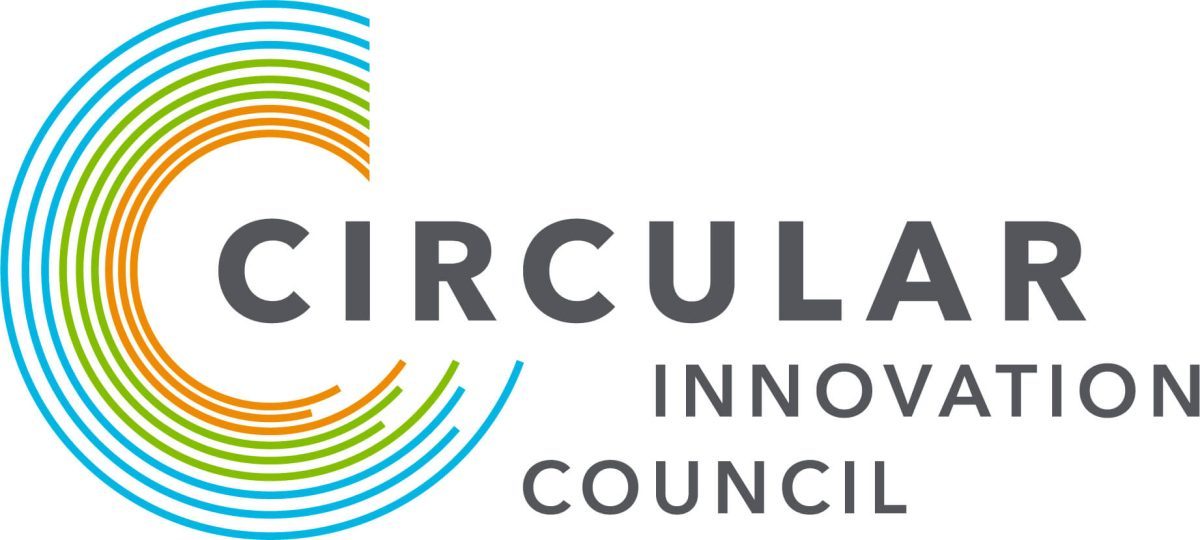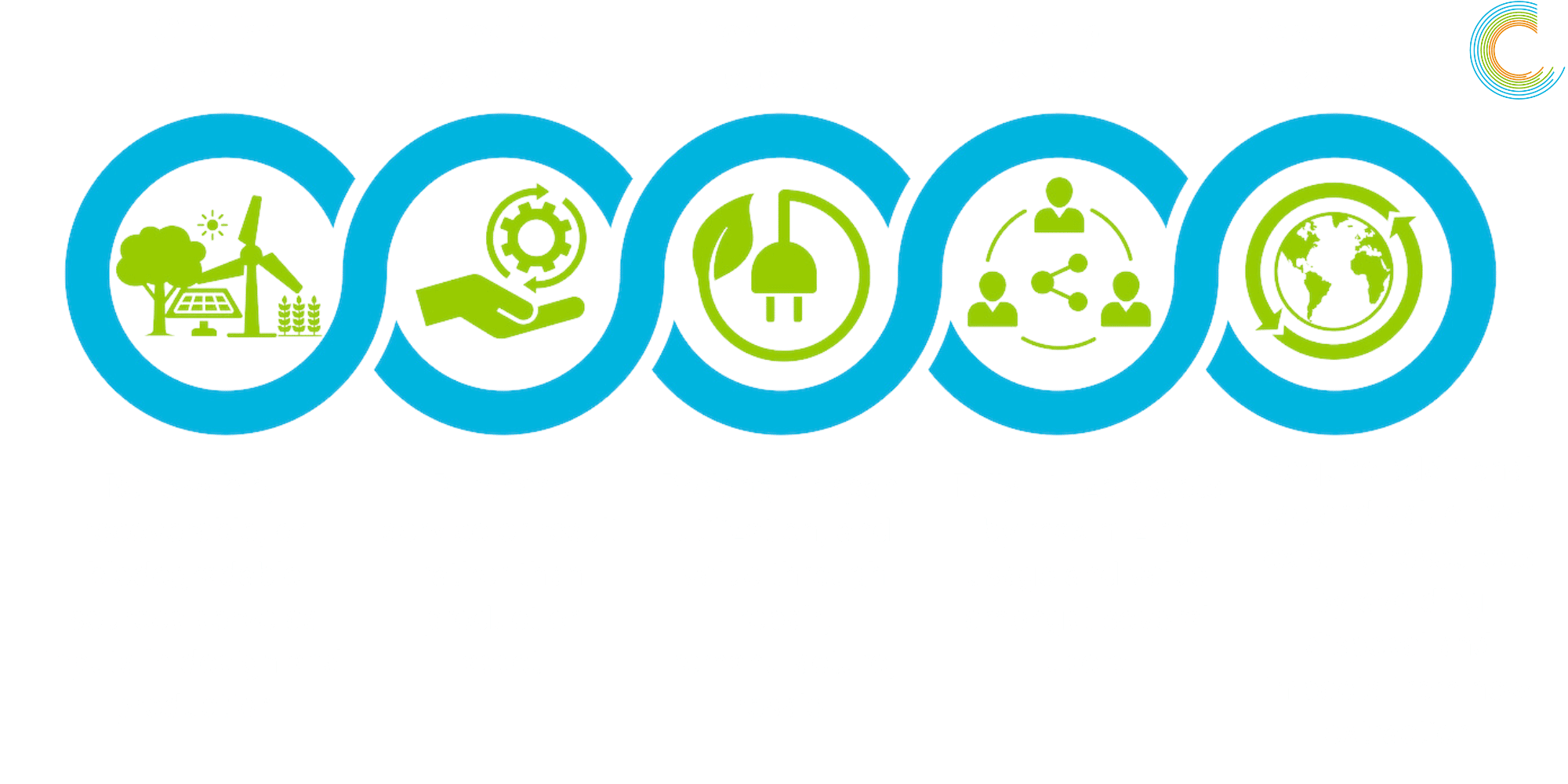
Home Circular Economy
Canada’s resource-based economy depends on the ability to preserve the value of finite resources and natural capital for success. Current linear models of production and consumption – take-make-waste – has proven to be unsustainable and a barrier to success. Products are designed and used with a limited life and diminishing value; and environmental and social costs are not considered in the purchase price. Shifting the economy to a model that is built on environment protection, social well-being, and robust financial health requires demand for better products, business models, and partnerships.
The circular economy re-engages consumption and production beyond the linear model by decoupling economic growth from resource use. Circularity has the ability to improve the value of natural resources, reduce carbon emissions, and eliminate waste. It redefines value, and encourages innovation in product design and business delivery systems. Transitioning to a circular economy doesn’t balance economic, environmental, and social priorities in isolation: it delivers them simultaneously.
Traditional model of production and consumption where resources are made into products and used until discarded as waste.
New model of production and consumption that keeps materials at their highest utility and value throughout their lifecycle, and recirculated into productions cycles to avoid waste.
The circular economy is built from a realignment of our values designed to protect our natural capital, reduce carbon emissions, and eliminate waste. As documented by the Ellen MacArthur Foundation, our ability to achieve climate targets require us to address the 45 percent of global emissions generated from how we make and use products and how we produce food.
As the Circular Innovation Council we are leveraging our history to advance waste elimination and strengthening its connection to low-carbon production and consumption.
In circular economy we design products so resources can be reused and reinvested in new products again and again.
A circular economy supports the idea of access over ownership.
By shifting to access over ownership, manufacturers are incented to make longer lasting and more efficient products that are designed with durability, repairability and reuse as primary considerations.
How can we advance the circular economy? Purchase smartly designed products meant to last longer, be reused, refurbished, and dismantled. Support companies that offer take-back of products after use. Embrace access over ownership. Use procurement and purchasing power to influence greater performance and deliver environmental and social value.
Microbial breakdown of organic matter in the absence of oxygen.
In a circular economy, anaerobic digestion can be used to convert food by-products, sewage sludge, and other biodegradable materials into digestates (or ‘biosolids’) that can be used as soil enhancers and biogas.
The processes – such as composting and anaerobic digestion – that together help to regenerate natural capital. The only materials suitable for these processes are those that can be safely returned to the biosphere.
A systems solution framework that tackles global challenges like climate change, biodiversity loss, waste, and pollution. It is based on three principles, driven by design: eliminate waste and pollution, circulate products and materials (at their highest value), and regenerate nature.
It is underpinned by a transition to renewable energy and materials. Transitioning to a circular economy entails decoupling economic activity from the consumption of finite resources. This represents a systemic shift that builds long-term resilience, generates business and economic opportunities, and provides environmental and societal benefits.
Microbial breakdown of organic matter in the presence of oxygen.
In a circular economy, composting can be used to convert food by-products and other biodegradeable materials into compost, which can be used as a soil enhancer.
The ability of a product, component or material to remain functional and relevant when used as intended.
Durability often applies to the physical attributes of a product (its ability to resist damage and wear), though with some products durability can be technological (for example the ability of software to be upgraded many times), and it can be emotional (for example the ability of certain clothes to stay desirable over time).
Materials that are non-renewable on timescales relevant to the economy, i.e. not geological timescales.
Examples include: metals and minerals; fossil forms of carbon such as oil, coal, and natural gas; and sand, rocks, and stones.
The period of time from when a product is released for use after manufacture to the moment it becomes obsolete beyond recovery at product level.
The period of time from when a product is released for use after manufacture to the moment it becomes obsolete beyond recovery at product level.
An economy in which finite resources are extracted to make products that are used – generally not to their full potential – and then thrown away (‘take-make-waste’).
It is a wasteful and polluting system that degrades natural systems.
Keep a product in its existing state of quality, functionally and/or cosmetically, to guard against failure or decline. It is a practice that retains the highest value of a product by extending its use period.
Materials that have been previously used. This includes: materials in products that have been reused, refurbished or repaired; components that have been remanufactured; materials that have been recycled. Also referred to as secondary materials.
The ease with which a material can be recycled in practice and at scale.
Transform a product or component into its basic materials or substances and reprocessing them into new materials.
Embedded energy and value are lost in the process. In a circular economy, recycling is the last resort action.
Divert a product from its intended market to another customer so it is used at high value instead of becoming waste.
For example, a supermarket can redistribute surplus edible food to a food rescue organization.
Return a product to good working order. This can include repairing or replacing components, updating specifications, and improving cosmetic appearance.
Regenerative production provides food and materials in ways that support positive outcomes for nature, which include but are not limited to: healthy and stable soils, improved local biodiversity, improved air and water quality.
In agriculture, regenerative production schools of thought include agroecology, agroforestry, and conservation agriculture.
Re-engineer products and components to as-new condition with the same, or improved, level of performance as a newly manufactured one.
Remanufactured products or components are typically provided with a warranty that is equivalent to or better than that of the newly manufactured product.
Energy derived from resources that are not depleted on timescales relevant to the economy, i.e. not geological timescales.
Examples include: wind, solar, hydropower, hydrothermal, ocean (wave and tidal), geothermal, and biogas from anaerobic digestion.
Materials that are continually replenished at a rate equal to or greater than the rate of depletion.
Examples include: cotton, hemp, maize, wood, wool, leather, agricultural by-products, nitrogen, carbon dioxide, and sea salt. To fit in a circular economy such materials (where relevant) must be produced using regenerative production practices.
Operation by which a faulty or broken product or component is returned back to a usable state to fulfil its intended use.
The ease with which a product or component can be repaired.
The repeated use of a product or component for its intended purpose without significant modification.
Small adjustments and cleaning of the component or product may be necessary to prepare for the next use.
Supply chains dedicated to the reverse flow of products and materials for the purpose of maintenance, repair, reuse, refurbishment, remanufacture, recycling, or regenerating natural systems.
The use of a product by multiple users. It is a practice that retains the highest value of a product by extending its use period.
The processes that products and materials flow through in order to maintain their highest possible value at all times. Materials suitable for these processes are those that are not consumed during use – such as metals, plastics and wood.
In the technical cycle the opportunities to maintain and generate value come through retaining the greatest proportion of the energy and labour embedded in the product. This is achieved, in order of value, by: maintaining, prolonging, sharing; reusing and redistributing; refurbishing and remanufacturing; and recycling.
Materials that have not yet been used in the economy.
These include both finite materials (e.g. iron ore mined from the ground) and renewable resources (e.g., newly produced cotton).
Five circular models that underpin the circular economy are based on the principles of longevity, reuse, repairability, upgrade, share, and material reduction and recovery. Each model is unique, and procurement can encourage suppliers and vendors to innovate and deliver one or a combination of models.

We respectfully acknowledge that we live, work and play on the traditional territory of many Indigenous Nations and we humbly extend our respect to Indigenous individuals, communities and Elders, past and present, as the traditional custodians of this land.
Circular Innovation Council is a registered charity.
Charity Registration Number: 119112118 RR 0001